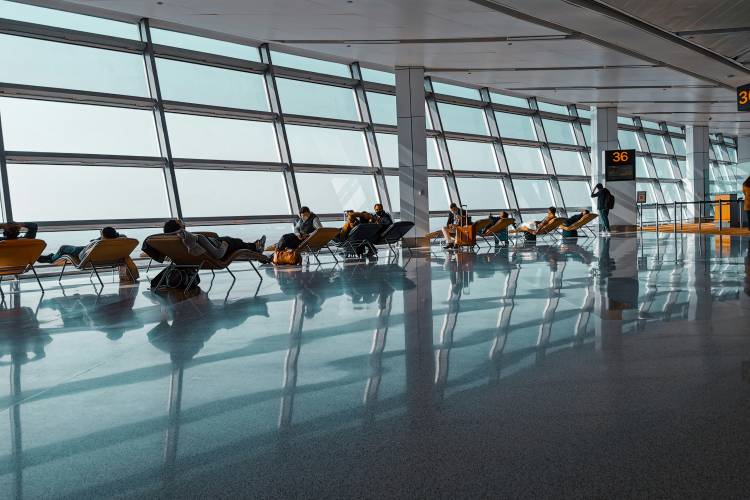On 28 June 2024, the roof of Terminal 1 at Delhi International Airport collapsed following heavy rains, resulting in one death and eight injuries. All departures from Terminal 1 were temporarily suspended. Ironically, DIAL’s website boasts that “Delhi Airport has won over 50 awards and accolades across the world, bringing recognition to the world-class infrastructure and services for the airport which serves as the gateway to India.”
In the eastern state of Bihar, 10 bridges have collapsed across six districts within a span of 16 days. Earlier last month, at least nine people were killed and dozens injured after a goods train collided with a passenger train in eastern India. These incidents highlight the broader issues with Indian infrastructure that must be addressed to prevent poor physical assets from becoming a significant constraint on the growth of the Indian economy.
READ | India’s informal sector shows signs of life after Covid-19, DeMo hiccup
The Economist recently discussed India’s failing assets, attributing the failures to extreme weather, a lack of quality mindset, and rampant corruption, as infrastructure projects involve significant financial investments.
Infrastructure sector on govt’s priority list
The government is aware of the importance of infrastructure for growth and has prioritised infra investments, particularly for swift post-COVID recovery. The Union government has been increasing its capital expenditure year after year (with Rs 11.1 lakh crore allocated in the Union Budget 2024-25). However, not all of this can be considered infra investment according to the Harmonised Master List of Infrastructure prepared by the ministry of finance. For example, defence capital expenditure, with an allocation of Rs. 1.72 lakh crore in BE 2024-25, is included in the government’s capital expenditure but is not part of the HML, and therefore cannot be considered infrastructure investment.
High overall GDP growth rates create increasing demand for infrastructure. However, no government agency collates data on actual infrastructure investment in the country (from Union government, state governments, Public Sector Undertakings, and the Private Sector, combined). Total infrastructure investment data was previously collected by the Planning Commission but has been discontinued.
Private agencies like CRISIL are now collating this data, and it is concerning that, against a requirement of 7-8% of GDP per annum, actual infrastructure investment is only 4.6% per annum (Rs. 12.5 lakh crore in 2022-23, according to CRISIL). Therefore, total infrastructure investment data needs to be collected officially by institutions like the NITI Aayog to enable evidence-based policy-making and to monitor performance against the targets set in the National Infrastructure Pipeline (2020), National MonetisationPipeline (2021), and PM Gati Shakti initiative (2021).
Private participation in infrastructure needs to be encouraged, but not at any cost. The majority of road sector projects by the Central Government are implemented through the Hybrid Annuity Model (HAM), which is largely risk-free for the private sector, with all risks borne by the public sector – including revenue risk, traffic risk, financing risk, operation and maintenance risk, and inflation and interest rate risk. Properly valuing these risks would reveal that HAM is negative value for money for the Government. Value for Money analysis needs to be incorporated into the project appraisal process in the Public-Private Partnership Appraisal Committee in the Department of Economic Affairs, Ministry of Finance.
Regulatory risk needs to be mitigated for the private sector to continue playing a major role in Indian infrastructure. Prioritising the competent staffing of regulatory agencies and improving their capacity is crucial. It is worth questioning why there is a loss of 23 paise per unit of power supplied in the country, amounting to over Rs. 30,000 crore of losses at the power distribution end, necessitating government bailouts every few years.
Additionally, a major infrastructure firm recently won Public-Private Partnership contracts for several major airports by bidding aggressively, only to later petition the airport regulator to treat the bidding parameter (per passenger fee) as part of costs, undermining the competitive bidding process by ensuring compensation through higher passenger development fees and higher landing fees for airlines.
Finally, despite the 2021-22 Union Budget liberalising the Viability Grant Funding regime for social infrastructure (health, education, water supply, municipal solid waste, etc.), there has been no significant uptake in private participation, despite the immense need for efficiency improvement and resource augmentation in these sectors. One major reason is the absence of sector-specific Model Concession Agreements (MCAs). MCAs need to be developed for social sectors at the Central Government level with balanced risks and rewards to attract private investment. Attention to these softer aspects would improve the effectiveness of infra-related announcements in the coming budget.
Kumar V Pratap is a former Joint Secretary (Infrastructure Policy & Finance), Ministry of Finance, Government of India, and author of Infrastructure Financing in India (Oxford University Press, 2024). Views are strictly personal.

